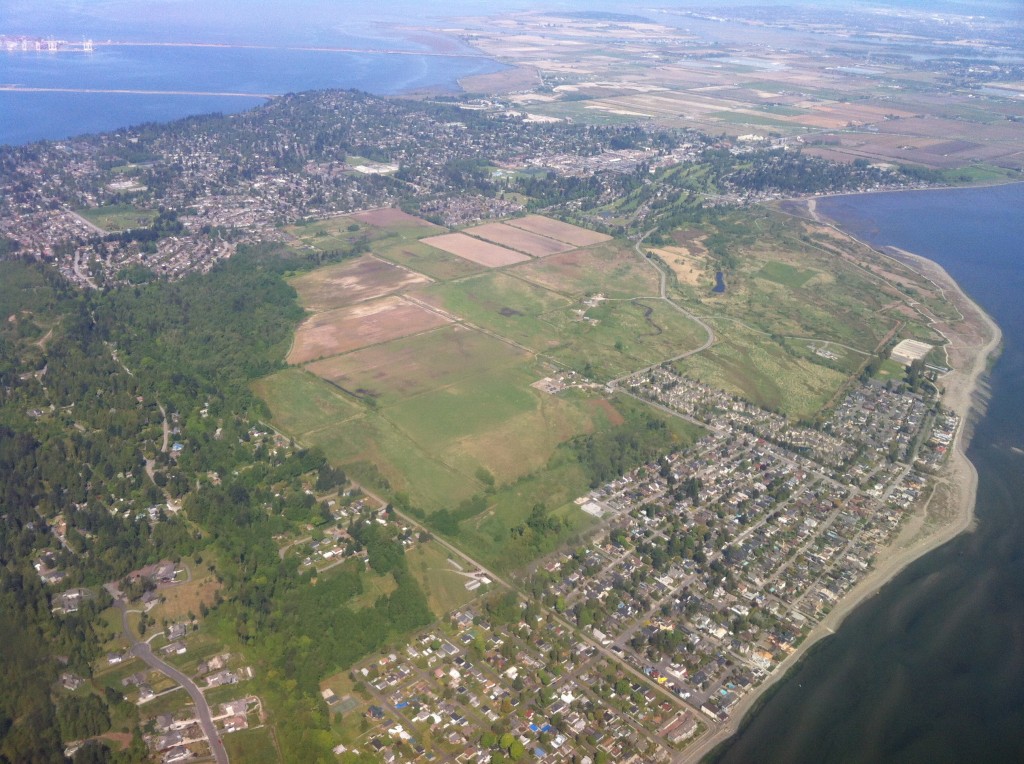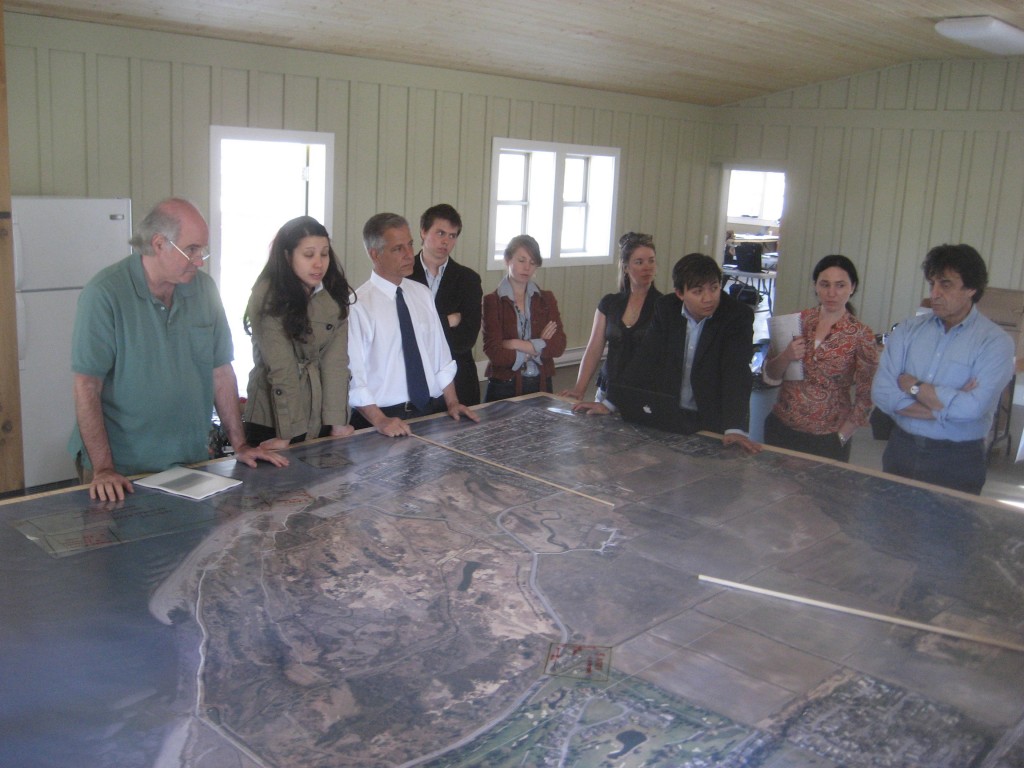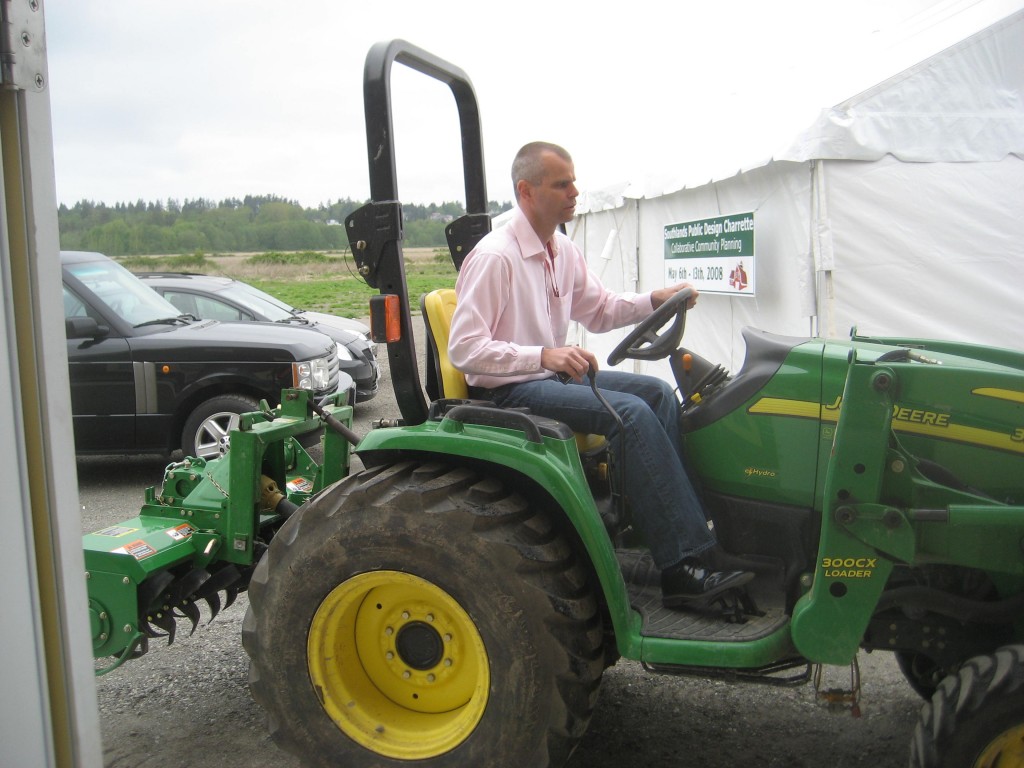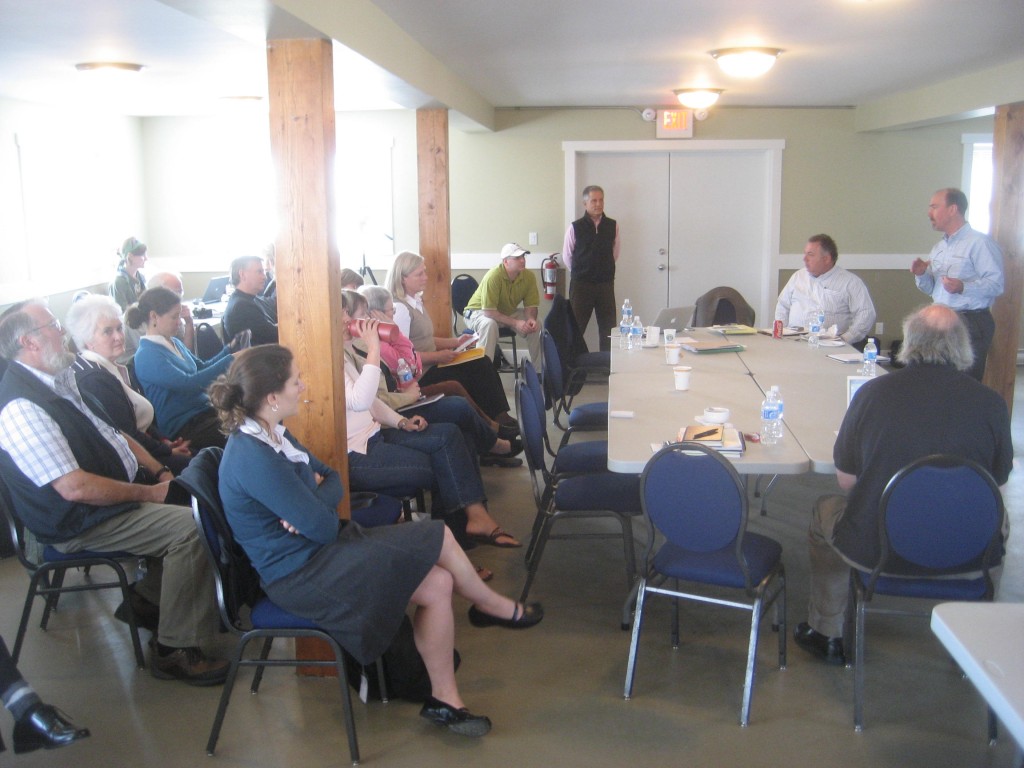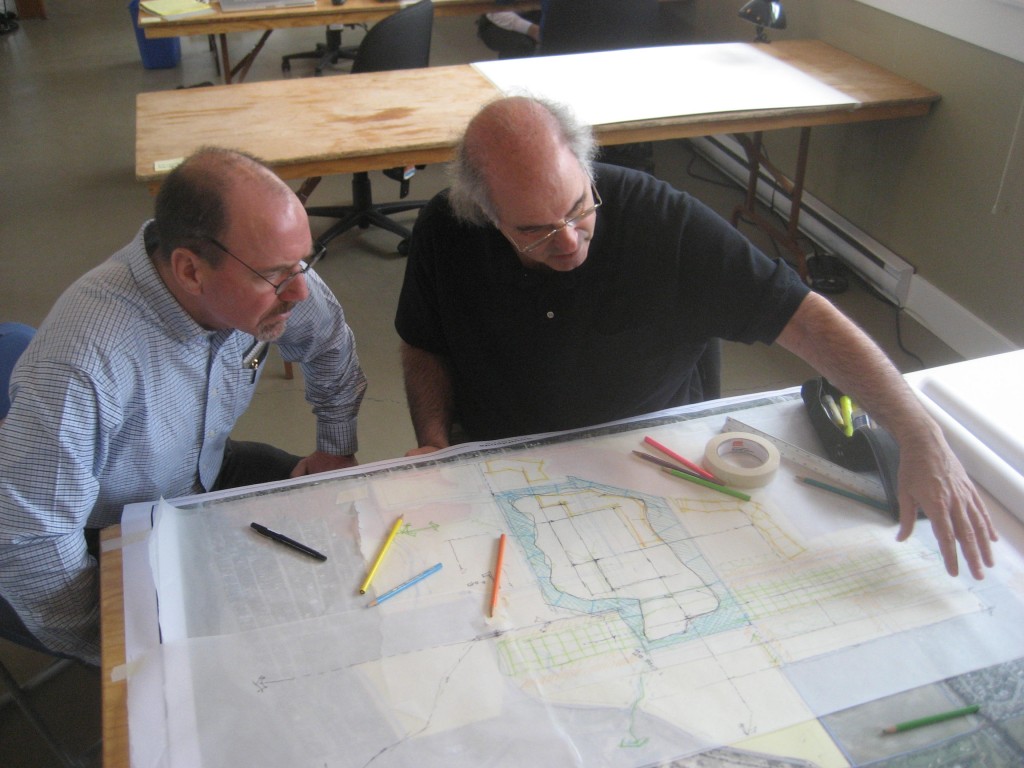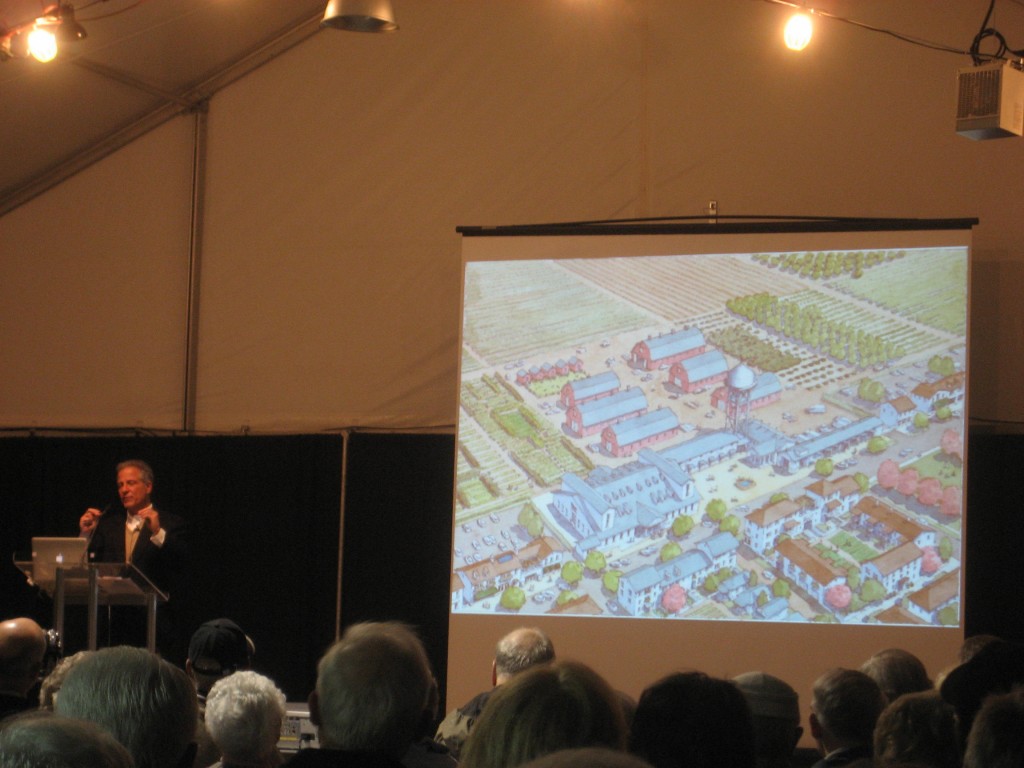Agricultural urbanism is a movement and approach that has emerged from planners, designers, developers, academics and others who are educated in many aspects of sustainable food issues, using their broad knowledge to address the planning and development of cities and communities to address sustainable food system goals.
Roots
The intellectual and practical foundation of AU includes:
- Urban agriculture
- Farmers markets and direct marketing for farmers
- Agricultural land preservation and farmland security
- Organic agriculture / Permaculture / SPIN Farming / others
- Food security
- Artisan food / slow food movement
- 100 mile diet
- Education on all aspects of food
- Farmers succession planning
- Co-operative farming
- Local food economies
- Community Supported Agriculture
- Wildlife and agriculture integration
- Sustainable communities
- Smart growth
- New Urbanism
- Green infrastructure
- Composting
- Many others
Envisioning a new integration between urbanism and agriculture – The Southlands project.
If there is one piece of land in British Columbia Canada that embodies the battle of consciousness over the relationship between development and food systems it’s the Southlands project in Tsawassen, BC. In the 1980s, it was known as the Spettifore Lands and it was released from BC’s Agricultural Land Reserve (ALR) in the 1980s through a highly politicized process at the provincial level. A 2,000 unit subdivision was proposed shortly after for this piece of farmland with Class 3 soils, positioned between the town of Tsawassen and the Boundary Bay waterfront. What ensued is now known as the longest public hearing in Canada’s history. Over a year of regularly scheduled public hearings and many hundreds of angry protestors, the subdivision application was turned down.
Two decades later, a long-standing family, the Hodgins, purchased the land and began explorations of what might be possible.
Sean Hodgins, the president of the Century Group real estate company, a visionary man, connected with Bob Ransford and engaged the community in a many year conversation about what the land needed to become to optimize its benefit to the community.
The contracted the firm DPZ (Duany Plater-Zyberk) to undertake one of their famous week long community charrettes to come up with a world-class plan for the site. They also drew in leaders from across the region to work with them. Included in this group of Vancouver area leaders were a group of consultants and academics who had been working for years on developing theories and methods for better integrating agriculture and development.
The Southlands planning project was the beaker in which catalytic heat was reached to force many ideas together into one place in a short time to envision a completely new relationship between food systems and development – and out of which Agricultural Urbanism emerged.
The SAAB story
As the team was preparing the policy statements and issue papers in preparation for the DPZ charrette, two of the local planning consultants on the project who had been tasked with integrating food systems thinking into the project, Mark Holland MCIP and Janine de la Salle, from the HB Lanarc Consulting firm were returning in an old SAAB 900 from an intense team meeting on the project, speeding in and out of dense traffic in the heavy winter rain in Vancouver, when they realized they needed a compelling flashpoint to hold all the ideas of food systems and development together in a way that would connect strongly with the DPZ planning team –or once again, agricultural land could simply fall to development plans, even highly progressive ones such as those used in New Urbanism.
The core goal was to foreground agriculture and food systems seamlessly within the new urbanism approaches DPZ was bringing – and in a simple flash, the term “agricultural urbanism” appeared.
The term stuck immediately – but upon further examination, it became apparent that it was a very powerful paradox, one that would require a lot of work to truly find an effective explanation of all that paradox embodied.
The Thinkers
Over the following months in preparation for the DPZ Southlands charrette, many professionals and food system thinkers engaged with the team and the framework of Agricultural Urbanism took shape.
Many engaged the discussions as the concept emerged prior to the charrette, in particular the following:
- Mark Holland and Janine de la Salle – HB Lanarc Consultants
- Ken Mullnix – Institute for Sustainable Horticulture, Kwantlen Univeristy College
- Patrick Condon – University of BC
- Edward Porter – urban designer
- Sean Hodgins, Century Group
- Bob Ransford, Counterpoint Communications.
- The Southlands Community Planning Team
- Earthwise Community Garden
- Michael Ableman – Foxglove Farm
- Derek Masselink, Masselink Environmental Design.
- Michael Von Hausen, MVH Urban Planning & Design
- Others.
A website was put up to get the idea into public circulation, a policy brief and presentation compiled, and it was all presented to DPZ at the beginning of the charrette.
The idea immediately got traction with DPZ’s innovative team and with the many community leaders in the area – and the DPZ charrette team pushed the ideas much further forward and gave them form in the Southlands plan.
The aftermath
Following the Southlands charrette, Agricultural Urbanism gained momentum and spread fast as a concept. DPZ promoted its ideas across the US incorporating them into other plans, and all the regional participants around Vancouver began many conversations and presentations in the region into other Canadian cities – triggering interest and controversy.
In 2009, the book Agricultural Urbanism was published by Green Frigate Press, including the ideas and writing from many of the original thinkers around the concept.
Ultimately, the fantastic site plan DPZ created for Southlands was rejected by the municipal council and it took another half decade of determined work from Sean Hodgins, Bob Ransford and the Southlands Community Planning citizen group to achieve zoning for a version the Southlands project – one that was reduced in the extent of its Agricultural Urbanism vision, but still true to its core principles.
